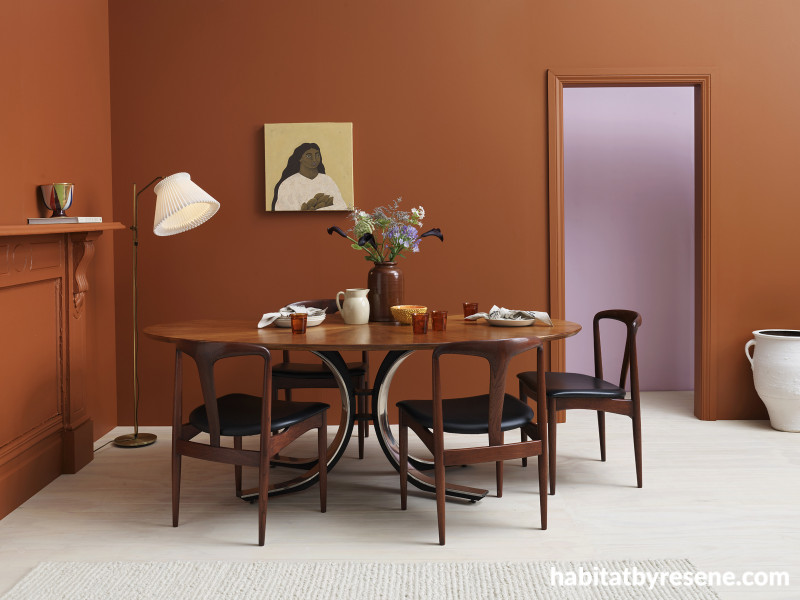
How to blend trends and timelessness through transitional design
08 Apr 2024
If you have ever found yourself on the fence about whether it’s better to embrace a trend-focused colour palette or opt for a classic look comprised of timeless hues, we have some good news. Thanks to renewed interest in a previously popular design approach, you may no longer need to choose.
Transitional design is a recently coined term that describes spaces which manage to successfully and harmoniously blend traditional elements with contemporary appeal. For those who wish to respect historical context while infusing modern sensibilities into their projects, the rise of this aesthetic movement comes as the ideal solution for updating early 20th century villas, Art Deco-era commercial buildings and the like.
What’s old is new again
If you’ve been in the business for a number of years, you’ll probably be familiar with the goal that transitional design is trying to achieve. After all, the idea of embracing old and new within a single space isn’t a new concept. For many years, a design that balanced both contemporary and traditional aspects was known as eclectic design. But as design vernacular has evolved, the term ‘eclectic’ seems to have become associated with either busy maximalism or a polite way to describe oddness. The term ‘traditional’ has likewise become something of a dirty word applied to looks that are considered outdated. So, before you roll your eyes at the idea that a recycled concept has been dressed up as something ‘new’, consider that the time might actually be ripe for a new description of this design approach. Instead, be excited that future clients may no longer be asked to strip away gorgeous moulding and authentic details in pursuit of a basic box.
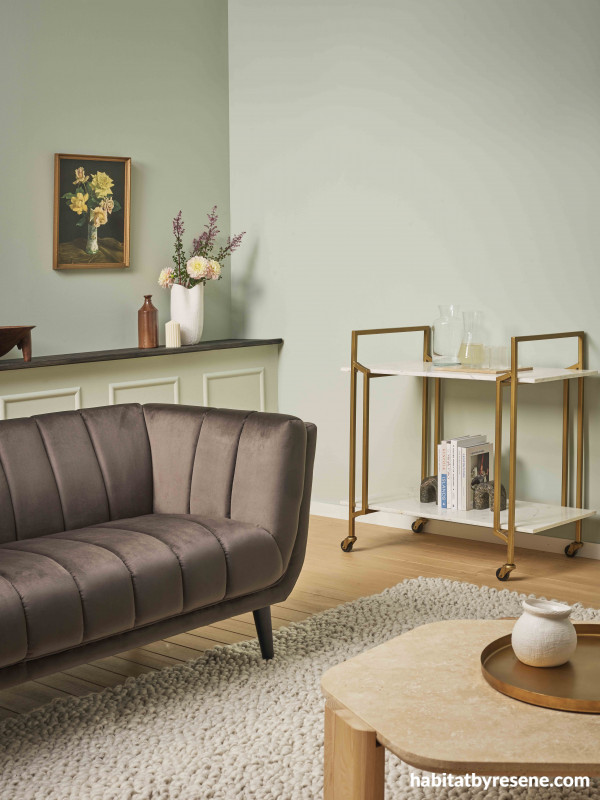
Mouldings and built-in features are a characteristic in transitional designs. Rather than painting these details white (which would be a more traditional approach), try painting them the same colour as your walls and ceiling for a cohesive look. When more differentiation is needed, try using a glossier sheen formula – such as Resene Enamacryl gloss waterborne enamel – to highlight trims. Walls and mouldings painted in Resene Pumice, skirting board in Resene Rice Cake, wood shelf stained in Resene Colorwood Pitch Black and floor finished in Resene Colorwood Bask. Sofa from Danske Møbler, bar cart from Republic, rug from Baya, coffee table, vases, candle, carafe, tumbler, book ends and books from A&C Homestore, wooden bowl, artwork and ink bottle from Flotsam & Jetsam.
Why transitional design is important
New Zealand and Australia boast a rich array of architectural heritage characterised by intricate detailing, ornate moldings and decorative fretwork, and plenty of buildings that include these features are not listed or protected. Designers, builders and decorators play an important role in preserving the historic integrity of these properties. When done well, transitional design can update buildings to meet the demands of modern living by preserving and honouring the architectural legacy while seamlessly integrating contemporary elements.
From adding state-of-the-art kitchens to luxurious bathrooms, modern amenities are essential for enhancing the functionality and comfort of older buildings. Transitional design facilitates the seamless integration of these updated amenities, allowing for the incorporation of cutting-edge technology and innovative features without compromising the building's historic charm.
Transitional design also offers unparalleled versatility and adaptability. Whether blending period pieces with modern furnishings or juxtaposing antique accents with sleek fixtures, this style allows for creative expression while maintaining a cohesive aesthetic. By preserving original features such as ornate crown mouldings, decorative millwork and hardwood flooring, you can pay homage to a property’s heritage while breathing new life into it.
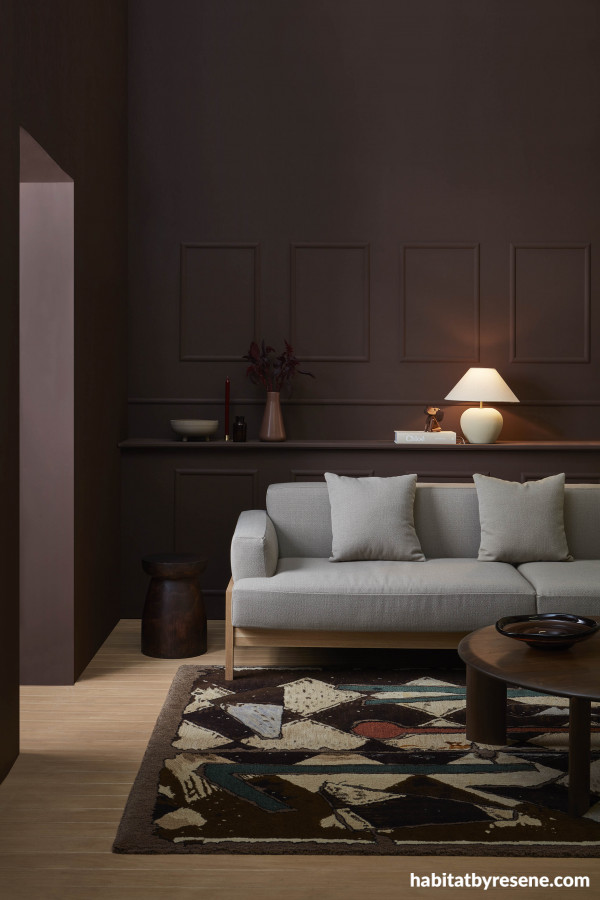
Walls painted in Resene Rebel, floor finished in Resene Colorwood Bask, lamp base in Resene Athena and stool in Resene Colorwood Deep Oak. Raised dish, book and plate from Smith & Caughey’s, sofa, coffee table, rug, flask vase and dog ornament from Good Form, flowers from Urban Flowers.
Striking the perfect balance
Transitional design embodies the essence of balance and harmony by combining the warmth and familiarity of traditional design with the colours, clean lines and simplicity of contemporary aesthetics. To strike the delicate equilibrium between old and new, there are some key features you’ll want to focus on in order to create a space that feels both inviting and sophisticated.
A blend of materials: Mixing different materials is a hallmark of transitional design. From sleek metals and glass to rich woods and plush fabrics, this style celebrates diversity while maintaining a cohesive look. Incorporating elements such as polished chrome, brushed brass and smoked glass accents add visual interest and depth to the space. Stain interior wood surfaces in Resene Colorwood stains to change or enhance the colour of the timber and choose a clear coat in a high gloss finish to bring protection and shine.
Timeless furnishings: Transitional interiors feature furniture with classic silhouettes and clean lines, bridging the gap between traditional and contemporary styles. Pieces often boast simple yet elegant designs, offering both comfort and sophistication. Upholstered seating in neutral fabrics and natural materials like wood, linen and leather contribute to the overall sense of warmth and comfort the look aims for. When blending old and new wood furniture, refinish pieces using the same Resene Colorwood stain to bring a sense of cohesion and repetition to the look while maintaining the charm and texture of the original timber. Or try a combination of Karen Walker Chalk Colour paints and waxes from Resene ColorShops to give furniture a new coloured finish while imparting a vintage look.
Emphasis on texture: Texture plays a pivotal role in transitional design, adding dimension and visual appeal to the space. Textured accents such as area rugs, baskets and fabrics create depth and interest and infusing the environment with tactile richness. Stained timber is popular on flooring as the wood’s inherent grain adds another element of visual texture. On walls and ceilings, limewash-style paint effects in natural colours created using Resene FX Paint Effects Medium will perfectly suit some spaces while textured or paintable designs from the Resene Wallpaper Collection will be ideal for others.
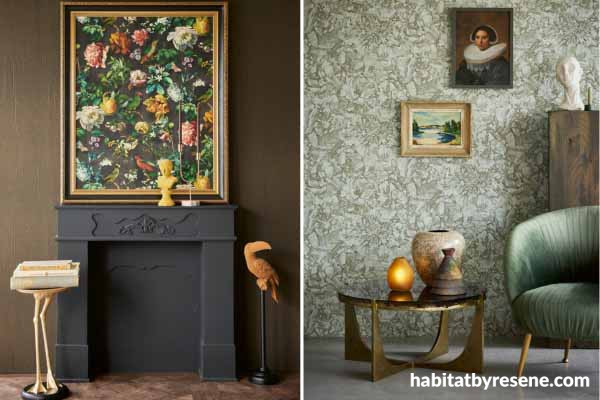
Try a lightly textured wallpaper from the Resene Wallpaper Collection or a classic floral design to increase the tactile or visual texture in your transitional design. Left room main wall wallpapered in Resene Wallpaper Collection E307333, right room main wall wallpapered in Resene Wallpaper Collection E307342.
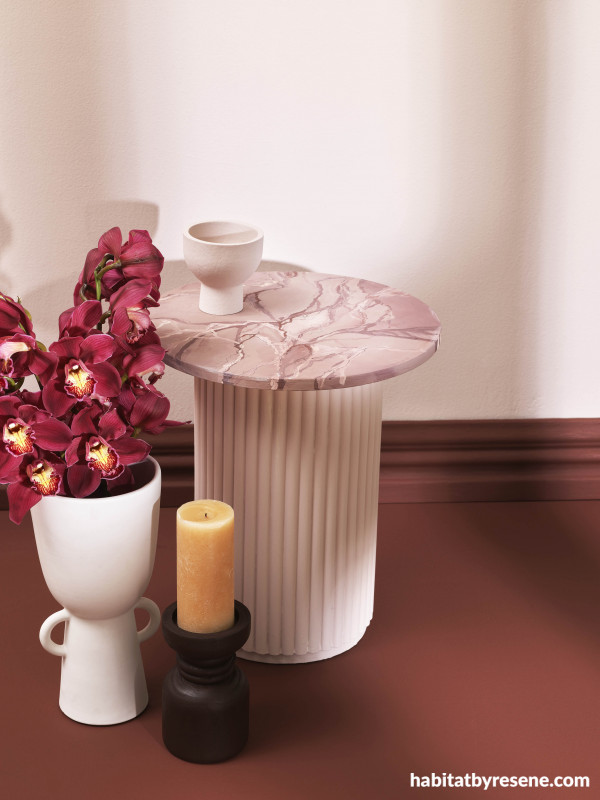
Additional visual texture can be added to furniture with paint effects that mimic classic materials, such as marble or granite. Wall, bowl and table base painted in Resene Contented, floor and skirting board in Resene Trek, hand-painted faux marble effect tabletop in Resene Contented, Resene Trek, Resene Otter and Resene Half Tea, vase in Resene Half Tea and candlestick holder finished in Resene Colorwood Bark.
The Resene paint colours to rely on
When it comes to selecting paint colours for a transitional transformation, opt for hues that evoke a sense of warmth, tranquility and sophistication. Transitional interiors often feature neutral colour palettes consisting of soft tones such as beige, taupe, grey and ivory enhanced with select features in more pigmented colours. Relying on lighter neutrals for walls, ceilings, trims and flooring will create aa versatile backdrop that allows statement furniture and accents to take centre stage while maintaining a sense of serenity and sophistication.
Updated character beiges like Resene Just Right and Resene Blank Canvas pair effortlessly with both traditional and contemporary elements and exude warmth and cosiness. A complex taupe is a sophisticated and understated choice – especially one with hints of mauve or brown such as Resene Dover White and Resene Triple Fossil to create a timeless and refined ambiance with a contemporary touch. Cream is another versatile and refreshing colour choice that brightens up transitional spaces while creating a sense of openness and airiness. Select creams with warm or greened undertones such as Resene Rice Cake, Resene Thorndon Cream or Resene Half Blanc to infuse an interior with warmth and softness while enhancing the overall sense of comfort and relaxation. For a more dramatic look, a deep brown like Resene Rebel is another versatile and timeless hue that complements transitional interiors beautifully while adding depth and sophistication to the space.
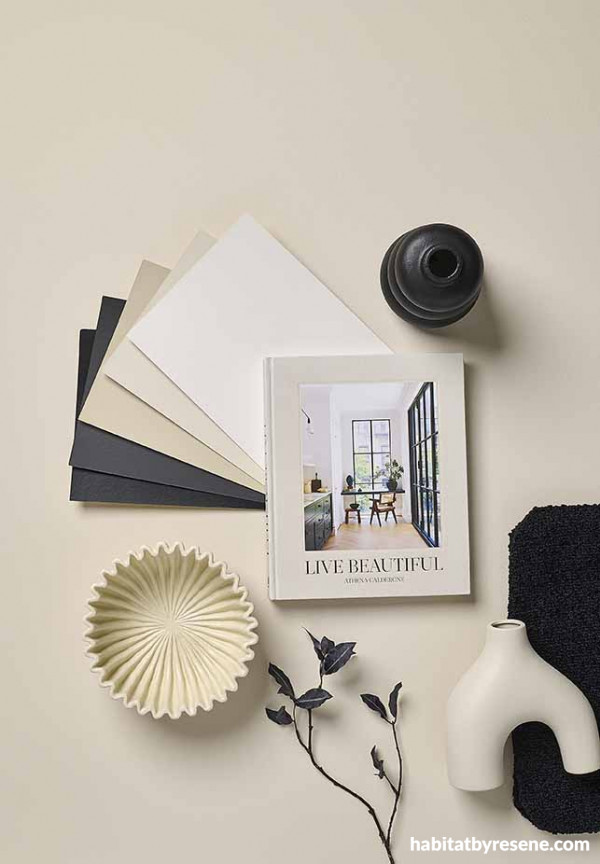
Background painted in Resene Fossil with A4 drawdown paint swatches in (from left to right) Resene Black, Resene Nocturnal, Resene Double Fossil, Resene Half Fossil and Resene Rice Cake, arch vase in Resene Half Fossil, bowl in Resene Double Fossil and dark vase in Resene Black. Cushion cover from Adairs, book from Flo & Frankie.
However, if your space has many traditional architectural details, stronger colour choices may be what’s needed to bring fresh, contemporary energy. Controlled use of bold or bright colours, such as Resene Cinnamon with Resene Twilight, can be used to draw attention to specific details, spark conversation and make a space feel of our own era rather than from times past. As a finishing touch, introduce elements of contemporary trends through smaller decor pieces like accessories and light fixtures and paint them to suit in on-trend hues using Resene testpots. This approach ensures the space remains anchored in enduring elegance while still feeling fresh and contemporary – and it allows items to be easily updated with new Resene colours whenever trends or tastes change. For the most on-trend options, look to the latest Resene The Range fashion colours collection for inspiration.
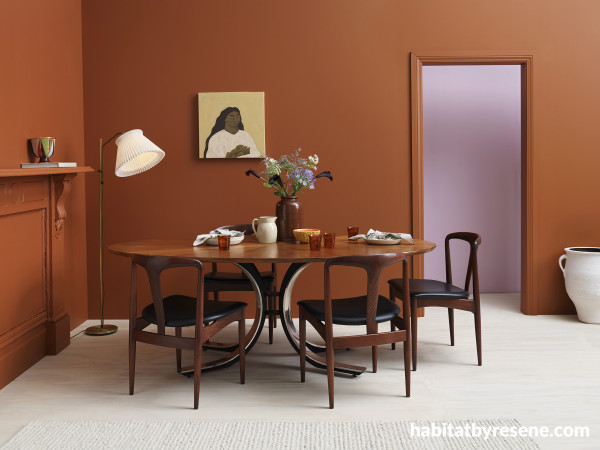
Main walls and trims painted in Resene Cinnamon, hallway wall in Resene Twilight, floor finished in Resene Colorwood in Resene Breathe Easy and large white pot in Resene Egg Sour. Table, chairs and lamp from Mr Bigglesworthy, rug from Baya, artwork by Hey Maker Studio from endemicworld, jugs from Flotsam & Jetsam, glass, cutlery, bowl and book from Father Rabbit, napkins from Claire Stapleton, dinnerware from Smith & Caughey’s.
For more on the latest design and colour trends, check out the most recent issue of BlackWhite magazine.
projects Amber Armitage, Vanessa Nouwens
images Bryce Carleton, Wendy Fenwick
Published: 08 Apr 2024







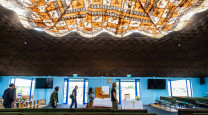
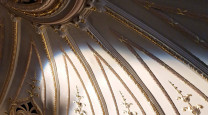





 look book
look book